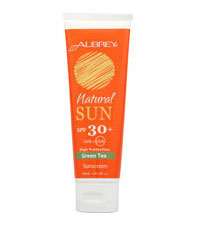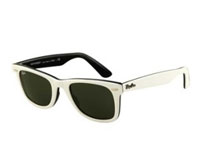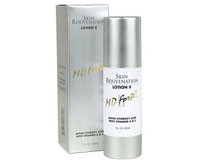 That "helpful" advice you hear at the gym may actually hurt you. We'll help you distinguish the truth from the B.S.
That "helpful" advice you hear at the gym may actually hurt you. We'll help you distinguish the truth from the B.S.
"Heat and vigorous exercise help you sweat out toxins."
You aren't likely to purify your body of much of anything by sweating, whether in a hot yoga class or sizzling sauna, because all that's in perspiration is water, salt, and a smattering of electrolytes, according to Rachel Vreeman, MD, author of Don't Cross Your Eyes...They'll Get Stuck That Way! "Sweat glands sit in the skin and aren't connected to other systems in the body, so it makes no sense that they would eliminate waste," she says. "The only role of perspiration is to keep us cool." The body does a pretty good job of getting rid of what it doesn't need, largely through the liver, kidneys, and digestive tract. There's nothing special you have to do to help, other than eat well, stay hydrated, and keep fit so those organs can function properly.
"The more limber you are, the better."
Even when trainers tell you not to force things, there's an implicit message that your eventual goal is a greater stretch. If you can touch your knees now, you should be aiming for the floor. If you can touch the floor today, work toward hugging your chest to your knees. But achieving those goals may offer nothing more than bragging rights. Flexibility is certainly important, and you should be flexible enough to do the things you need or want to do without being uncomfortable," says Jo A. Hannafin, MD, PhD, orthopedic director of the Women's Sports Medicine Center at the Hospital for Special Surgery in New York City. "But there is no health benefit in having a hyperflexible body or being able to twist yourself into a pretzel just for the sake of doing so." In fact, pushing your body into extreme stretches can cause injury. People with tremendously lax joints may be at greater risk for hurting themselves because their ligaments can't effectively keep their joints in position, explains Polly de Mille, an exercise physiologist who works with Dr. Hannafin.
"A cool-down after your workout minimizes muscle soreness."
For years researchers believed that lactic acid buildup during rigorous exercise was what caused our muscles to ache later. Their solution: a few minutes of walking or stretching to help disperse the lactate to other parts of the body. It's a concept that's alive and well today, despite the fact that reams of research have proved that lactate buildup has little to do with postexercise muscle soreness. "There is some evidence that after intense exercise, a cool-down can help prevent blood from pooling in a person's extremities and reduce their risk of becoming dizzy or passing out," says Carl Foster, PhD, professor of exercise and sport science at the University of Wisconsin-La Crosse. "I would recommend doing it after any class to allow people to get their heart rates down." But don't sweat it if you have to cut out of your session early. "After a moderate workout, walking to the locker room will provide all the cool-down a healthy person needs," Foster says.
"You should replace your sneakers every six months to avoid injury."
 During a typical five-mile outing, the average runner's feet will strike
the ground -- and compress the shock absorbent padding in her shoes --
about 7,000 times. Cushioning and uppers will wear out, potentially
providing less support for ankles and feet. And worn treads raise the
risk for skids and falls. So replacing sneakers every 300 to 500 miles,
or roughly every three to six months, is a common and sensible guideline
for avid runners. "Trainers who advise this as a general rule, however,
aren't taking into account that people who exercise indoors or run
fewer miles simply don't put that kind of stress on their shoes," says
Rob Conenello, president of the American Academy of Podiatric Sports
Medicine. He suggests replacing sneakers you use indoors about once a
year. Better yet, "every few months, check the soles to make sure the
treads aren't worn," he says. "Then take each shoe in your hands and
give it a twist. If it twists easily, like a towel, your sneakers
probably aren't providing enough support."
During a typical five-mile outing, the average runner's feet will strike
the ground -- and compress the shock absorbent padding in her shoes --
about 7,000 times. Cushioning and uppers will wear out, potentially
providing less support for ankles and feet. And worn treads raise the
risk for skids and falls. So replacing sneakers every 300 to 500 miles,
or roughly every three to six months, is a common and sensible guideline
for avid runners. "Trainers who advise this as a general rule, however,
aren't taking into account that people who exercise indoors or run
fewer miles simply don't put that kind of stress on their shoes," says
Rob Conenello, president of the American Academy of Podiatric Sports
Medicine. He suggests replacing sneakers you use indoors about once a
year. Better yet, "every few months, check the soles to make sure the
treads aren't worn," he says. "Then take each shoe in your hands and
give it a twist. If it twists easily, like a towel, your sneakers
probably aren't providing enough support."
"Running gives you wrinkles because all that pounding breaks down collagen."
It's an argument that could send just about anyone running...for the nearest low-impact class. Fortunately the idea doesn't appear to have any hard science to back it up. "It sounds anecdotal and speculative," says Joseph M. Gryskiewicz, MD, president-elect of the Aesthetic Society Education and Research Foundation. "Having performed surgery on many women marathoners, I can say that their bodies overall are very toned, which refutes the notion that pounding breaks up collagen." It's true that some runners can look a bit gaunt and somewhat craggier than their Pilates-practicing counterparts. But this is largely due to having less body fat and spending more time in the sun, experts say. All those rays also put runners at greater risk for developing skin cancer. Adequate protection -- wearing protective clothing, a hat, waterproof sunblock of SPF 30 or higher, and wraparound sunglasses labeled as "UV absorption up to 400 nm," which means they block at least 99 percent of UV rays -- is a must, says Debra Jaliman, MD, author of Skin Rules: Trade Secrets from a Top New York Dermatologist.
"You should keep your heart rate below 140 when exercising while pregnant."
This statement has been attributed to the American College of
Obstetricians and Gynecologists, but it never issued the warning. In
1985 it came out with a recommendation about exercise and pregnancy that
did not discourage working out but did caution that overly vigorous
exercise might deprive a fetus of blood and raise a pregnant woman's
core temperature to dangerous levels. Over time the organization has
become even more encouraging of exercise, and in 2002 it not only deemed
moderate exercise safe for most moms-to-be but also declared it a vital
part of prenatal health.Nonetheless the 140-heart-rate myth lives on. "These days there is no one-size-fits-all heart rate for pregnant women," says James M. Pivarnik, PhD, director of the Center for Physical Activity and Health at Michigan State University in East Lansing. "Once she gets the green light from her physician, a woman can pretty much do whatever her body and lack of symptoms allow her to do." Keep in mind, though, that this isn't the time to step up your fitness routine. As a general rule, it is fine to work to the point of fatigue but not exhaustion. Just about the only off-limits activities are high-impact sports, such as boxing, maximal weight lifting, step aerobics (which may compromise balance), and scuba diving. Use common sense and always check with your doctor first. By Peg Rosen








